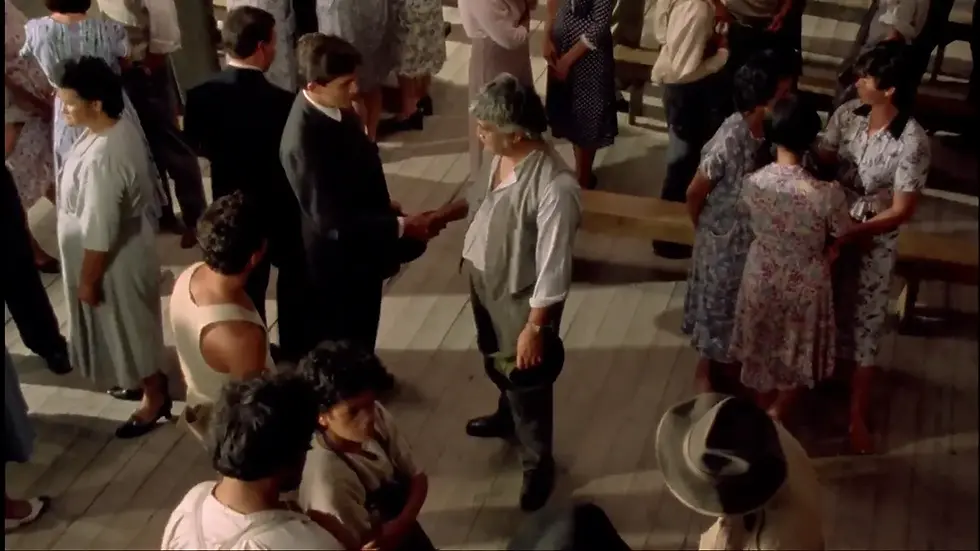Who Wears the Pants in the Fashion World?
- Carlos Norton
- Aug 26, 2024
- 4 min read
ENTERTAINMENT | STYLE
Written by Carlos Norton (he/him) | @carlosnorton_ | Contributing Writer

I was doom scrolling TikTok the other day when I stumbled across a video that lingered in the recesses of my brain. A young woman stared deadpan into the camera and declared: "The sexiest thing a man can wear is a shirt with a little crop. Everyone in the comments was all for it, but the comment felt off to me.
Don't get me wrong—I agree with her. As a gay man, Paul Mescal and Pedro Pascal come to mind with their short-shorts, moustaches, and those "shirts with a little crop". But I can't help but wonder—when did breaking gender stereotypes become the social norm?
Fashion trends are cyclical. They fade away and then come back in new forms, evolving with the times. We went from baggy jeans in the '90s to skinny low-rise in the '00s, and now, in the 2020s, we're back to baggy jeans. It seems as though that everytime someone debuts a look that was popular 20 years ago, everyone stares in awe.
To borrow from Miranda Priestly and The Devil Wears Prada: "It's sort of comical how you think that you've made a choice that exempts you from the fashion industry when, in fact, you're wearing a sweater that was selected for you by the people in this room."
As well as recycling, fashion is also about borrowing styles. Many current mainstream fashion trends debuted in the queer space. One that comes to mind is jorts. Once seen as a crime against fashion, queer people started rocking both baggy and tight jorts. Embracing the 00's style, jorts were made 'campy' and 'ironic'. Now you can't walk down the street without spotting someone in jorts. Often, what was once seen as 'ugly' was adopted by queer culture, before it became a part of mainstream fashion.
You've got to admit, there's an obvious double standard in fashion. If a straight male celebrity wears pearl necklaces, linen shorts and dangly earrings, he's labelled a visionary for borrowing feminine fashion choices. But when a queer person tries the same—coming to university in makeup or feminine clothing— they're more often than not verbally abused, ostracised or even physically assaulted.
Wearing a "shirt with a little bit of a crop" wasn't me waiting to be talent-scouted for Vogue or Euphoria. It was a way for me to connect with my community and feel a sense of belonging.
I've had homophobic slurs and comments yelled at me on the street because of how I've dressed. My clothing choices aren't about following fashion trends but survival and self-expression in an often hostile world.
The constant harassment and fear of people laughing at me started to outweigh how good I felt wearing the clothes I wanted. Little by little, my perfect outfit went from colourful socks covered in silly animals, brown well, well-worn corduroy pants and a thick, baggy, deep green button-up to plain black hoodies, blue jeans, and simple white socks. An outfit right out of Hallensteins. For me, it quickly became easier to blend in than risk standing out,
The moment an influencer or celebrity draws fashion inspiration from other genders, it's instantly given a free pass to become the next hot trend. The same outfits that draw scorn and danger to the queer community are seen as the height of chic by those with large followings and social clout. It's disheartening to see the very clothes that once made me a target now being praised as the epitome of style.
I love seeing fashion evolve and people embracing styles that challenge social norms. However, It's hard to ignore the double standard. When did a change in who wore the clothes decide whether they were socially acceptable? And how many people were hurt along the way before it became 'sexy'? We've made strides in equality, and I'm not here to gatekeep alternative fashion. But it's exhausting how easily people change their opinions just to stay on trend.
People forget how queerness has shaped fashion. Or they just Google "queer influence on fashion" and regurgitate the first name they find. Like that TikTokker, who credited his style of painted nails and pearl necklaces to Marsha P. Johnson. A queer activist who threw the first brick at Stonewall. Talk about a cop-out.
Homophobic stigma still runs deep when it comes to freedom of expression and fashion. Between January 2022 and April 2023, there were 561 reported hate crimes in New Zealand alone, according to The Guardian. Here in Aotearoa, we're relatively progressive compared to places like Uganda, Nigeria and Sri Lanka, where LGBTQ+ people are still criminalised for queer behaviour. Yet, there are still 71 countries worldwide holding onto this archaic mindset.
What we need isn't just a fresh take on fashion trends but a change in how we value the people and history behind clothes. Fashion should be about self-expression and community. It shouldn't be centred around chasing the next big trend or a quick path to fame.
The next time you see someone pulling off clothing that is bold or unique, take a moment to appreciate the history and the people who paved the way for that style. Because behind every "shirt with a little bit of a crop" is a story of survival, courage and a desire to belong. Fashion isn't just fabric—it's a statement, a protest, and sometimes, a lifeline.




Fashion isn’t just about trends, it’s about identity and courage. This article beautifully captures how style can be both expression and resistance. Just like Jaeger LeCoultre Watches, true fashion stands the test of time and tells a deeper story.
Saya suka sekali konten seperti ini. Btw, saya rekomendasiin kabar4d Slot Gacor Maxwin buat yang hobi main slot. https://mainkabar1.cc
Mantap sekali ulasannya, saya jadi paham. Saya juga punya rekomendasi situs slot gacor nih: kabar4d Slot Gacor Hari Ini https://cartegris.com